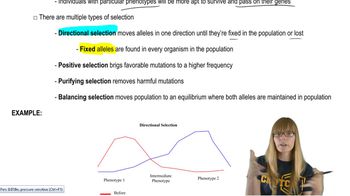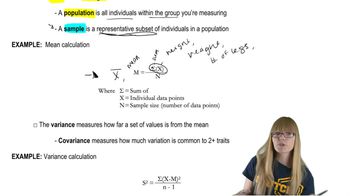Here are the essential concepts you must grasp in order to answer the question correctly.
Random Sampling
Random sampling is a technique used to select a subset of individuals from a larger population, ensuring that each member has an equal chance of being chosen. This method helps to minimize bias and allows for a more accurate representation of the population's characteristics. In the context of dividing candies, random sampling ensures that the distribution of colors is not influenced by personal preferences.
Recommended video:
Frequency Distribution
Frequency distribution is a statistical method that shows how often each value occurs in a dataset. It is typically represented in a table or graph, allowing for easy visualization of the data. In this exercise, calculating the frequency of each candy color helps to understand the diversity and abundance of colors in the sample, providing insights into the overall composition of the bag.
Recommended video:
Proportional Representation
Proportional representation refers to the idea that the distribution of items (like candies) should reflect the overall composition of the original group. When dividing the candies, it is important that each pile represents the variety and quantity of colors found in the entire bag. This concept is crucial for ensuring that each participant receives a fair and representative sample of the candies.
Recommended video:
Mathematical Measurements






